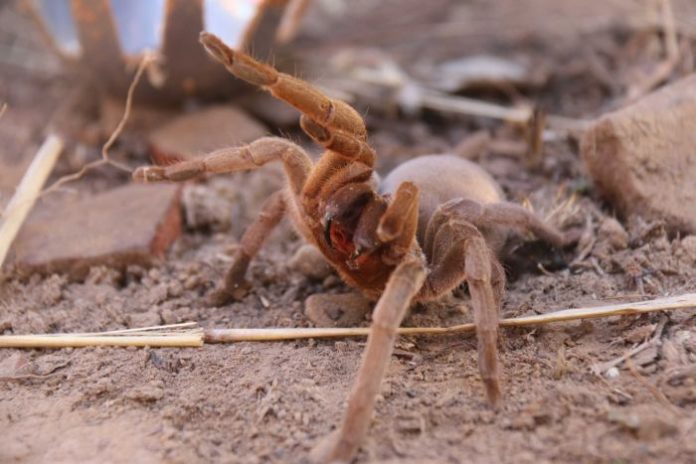
A floodplain near Maningrida thought to have the highest concentration of tarantulas in the world offers rare medicinal and economic opportunities, a spider expert says.
An estimated 25,000 diving tarantulas live along a 10 kilometre stretch of floodplain largely hidden from outsiders and deep within lands controlled by traditional Aboriginal owners.
The head of Queensland Museum’s arachnological division, Dr Robert Raven, who has named more than 400 spiders in his 40-year career, believes the sheer number of tarantulas creates special opportunities for researchers seeking to unlock the spider’s secrets.
“There are probably more species of tarantulas in the Northern Territory than there are in any other single state,” Dr Raven said.
“Because there are so many, it’s not like we’re hunting or picking for a [particular] animal. They’re all around us.”
As scientists around the world investigate venom and its ability to create pharmaceutical drugs, Dr Raven believes the Maningrida diving tarantula could hold a medical miracle.
Dr Raven said any venomous creature that could infect a vertebrate had a “significant potential” to be a source of a valuable pharmaceutical that could benefit the entire community.
“The entire intellectual property concerning the spider – its young, its adults, and its venom – are all property of the community,” he said.
“This is a resource for the community in a number of ways… and this could flow back into the community eventually to help them manage the parks better.”
But finding a researcher willing and able to investigate the tarantula has proved difficult since its discovery.
“They’re very difficult to study, you really need some quality equipment, and you need someone who’s young and strong.”
Maningrida diving tarantula discovered by NT children
The Maningrida diving tarantula was discovered 10 years ago by local children during a scientific excursion, but the spider is yet to be scientifically named.
“When we came across the tarantulas on the flood plain it was like a eureka moment,” teacher Mason Scholes from Maningrida Community Education Centre said.
“We knew we had found something pretty special.”
But while Western science had only recently identified the spider, traditional owner Leila Nimbadja remembered encountering the spider as a young girl while fishing with her father.
“I saw a spider hole and my father said to me, ‘watch out for that spider hole’,” Ms Nimbadja said.
“But I stepped in it already. And the next day I had a blister.
“And it was really painful too.”
Dr Raven was part of an expedition that recently discovered another species of Tarantula in the Territory. He suspects another undiscovered species also lives near the Maningrida Diving Spider.
What’s known about the diving tarantula?
Relatively little is known about the hairy arachnid.
What is known about the species is it can swim, coating itself in air bubbles to breath underwater and access its burrow when submerged during the wet season.
“It seems the spider is very comfortable underwater,” Dr Raven said.
“The Aboriginal boys have done some checks, and they put a root into the water and the spider very happily runs down into the water and sits on the root covered in a beautiful coat of air bubbles.”
What remains a mystery is why it lives in such great numbers in a relatively small area; in some areas, the burrows are only a few feet from one another.
Scientists are also yet to discover where the baby tarantulas live or whether the species can be found elsewhere the Territory.
Dr Raven hopes an enthusiastic scientist will be able to unlock these and many other mysteries.


